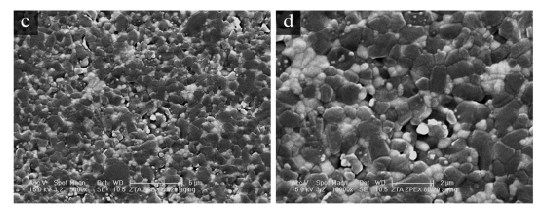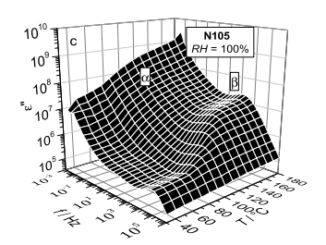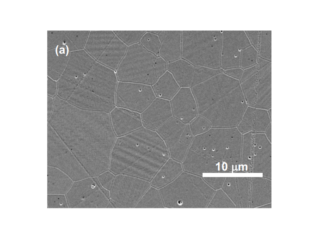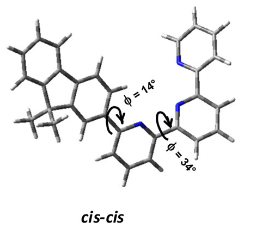
Nanomechanical and microstructural characterization of a zirconia-toughened alumina composite after aging
Abstract: This study’s objective was to mechanically characterize and validate the synthesis method of a polycrystalline composite comprised of 80% alumina reinforced with 20% translucent zirconia (zirconia-toughened alumina, ZTA) and compare to an experimental translucent zirconia. Experimental ZTA (ZTA ZPEX 80/20) and translucent Y-TZP (ZPEX) green-state disc-shaped specimens were obtained via uniaxial/isostatic ceramic powder pressing technique. The discs were sintered using a predefined protocol after both sides of the discs were polished. The specimens were subjected to nanoindentation testing to acquire their elastic modulus (E) and hardness (H) before and after a simulated low temperature degradation (LTD) challenge. Subsequently, the fabricated discs had their 3D surface topographical (Sa/Sq) parameters assessed via interferometry before and after exposure to a simulated LTD aging protocol. The specimens were evaluated using X-ray diffraction (XRD) to assess the tetragonal-monoclinic phase transformation and via scanning electron microscopy (SEM) to evaluate the homogeneity of the surfaces and distribution of the grains. The apparent density was measured using Archimedes’ principle. All of the data were statistically evaluated through repeated measures ANOVA following post-hoc comparisons using the Tukey test (p < 0.05). The XRD patterns indicated a higher increase in the monoclinic peak for ZPEX compared to ZTA ZPEX 80/20 aged. LTD aging did not have an effect on the surface roughness (Sa/Sq) for both groups (p > 0.05). A significant decrease in the E values after the aging protocol was observed for both groups (p < 0.01). While ZTA ZPEX 80/ 20 did not show statistically significant differences in the hardness values after the aging protocol (p = 0.36), ZPEX demonstrated a significant decrease in the H values (p = 0.03). For ZTA ZPEX 80/20, simulated LTD aging did not affect the tested properties, except for the E values. Although artificial aging did not affect the surface roughness of ZPEX, the E and H values significantly decreased after aging.
Author(s): Lopes, ACO; Coelho, PG; Witek, L; Jalkh, EBB; Genova, LA; Monteiro, KN; Cesar, PF; Lisboa, PN; Bergamo, ETP; Ramalho, IS
CERAMICS INTERNATIONAL
Volume: 45 Pages: 8840-8846 Published: MAY 2019
DOI: 10.1016/j.ceramint.2019.01.211




